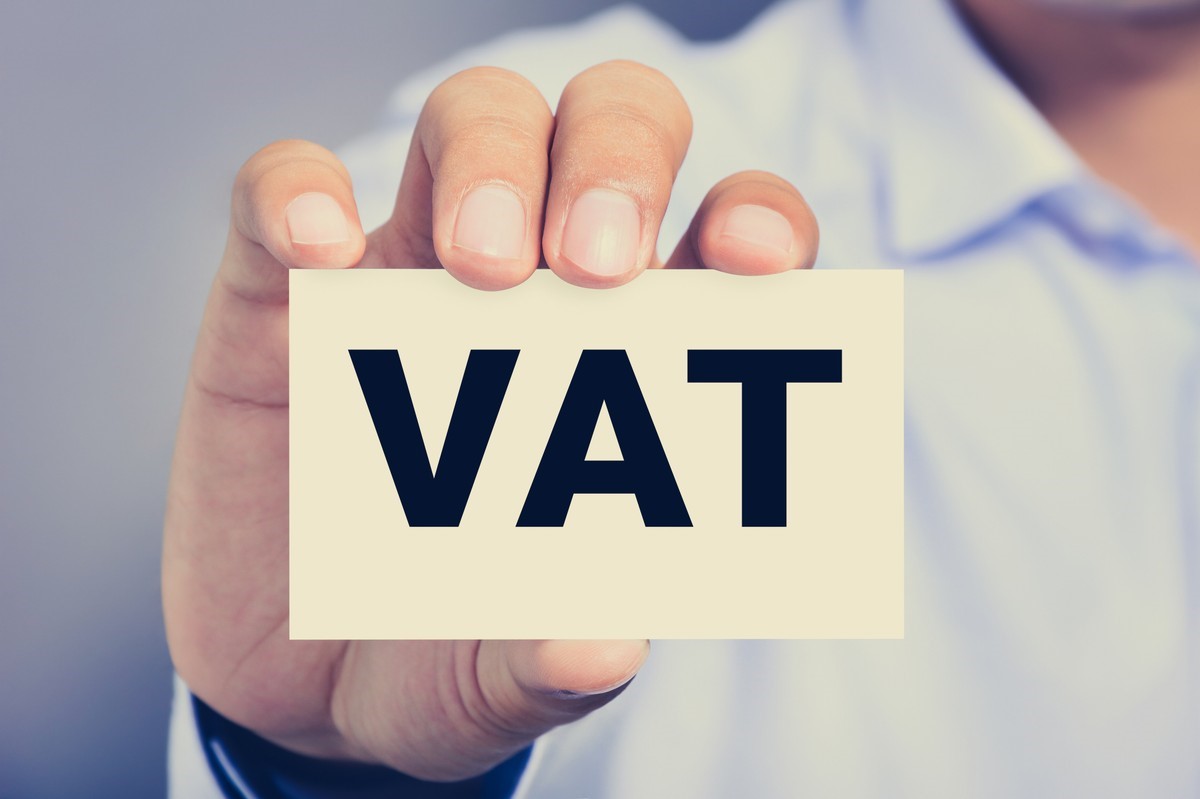Finance
The Basics of Bonds and Fixed Income Investing

The Basics of Bonds and Fixed Income Investing
Investing in bonds and fixed income securities is a cornerstone of conservative investment strategies, providing stability and predictable returns. This article explores the fundamentals of bonds and fixed income investing, breaking down key concepts, types of bonds, and strategies for incorporating them into an investment portfolio.

Image by: https://cdn. pixabay. com
What Are Bonds?
Bonds are debt instruments issued by corporations, governments, or other entities to raise capital. When an investor purchases a bond, they are effectively lending money to the issuer in exchange for periodic interest payments and the return of the principal amount upon maturity. Bonds are a crucial component of fixed income investing, characterized by their regular income streams and lower risk compared to equities.
Key Components of a Bond
- Face Value (Par Value): The amount the bondholder will receive back at maturity. Typically, bonds are issued in denominations of $1,000.
- Coupon Rate: The interest rate paid by the bond issuer on the face value of the bond, usually expressed as an annual percentage. For instance, a bond with a 5% coupon rate and a $1,000 face value will pay $50 annually.
- Maturity Date: The date on which the bond’s principal amount is repaid. Bonds can have short-term (less than 5 years), intermediate-term (5-10 years), or long-term (more than 10 years) maturities.
- Yield: The return on investment for the bondholder, often expressed as a percentage. Yield can be influenced by the bond’s coupon rate, face value, and market price.
Types of Bonds
Understanding the different types of bonds can help investors select the right mix for their portfolios.
- Government Bonds
Government bonds are issued by national governments and are considered low-risk. They are backed by the government’s creditworthiness.
- Treasury Bonds (T-Bonds): Issued by the U.S. Department of the Treasury with maturities ranging from 10 to 30 years.
- Treasury Notes (T-Notes): Shorter maturities compared to T-Bonds, ranging from 2 to 10 years.
- Treasury Bills (T-Bills): Short-term securities with maturities of one year or less.
- Municipal Bonds
Issued by state and local governments, municipal bonds help finance public projects. They come in two main types:
- General Obligation Bonds: Backed by the issuer’s taxing power.
- Revenue Bonds: Supported by the revenue generated from specific projects or sources.
- Corporate Bonds
Issued by corporations to fund business operations, corporate bonds come with varying degrees of risk and yield.
- Investment-Grade Bonds: Issued by financially stable companies, offering lower yields but lower risk.
- High-Yield Bonds (Junk Bonds): Issued by companies with lower credit ratings, offering higher yields to compensate for higher risk.
- Agency Bonds
Issued by government agencies or government-sponsored enterprises (GSEs), such as Fannie Mae or Freddie Mac. They often offer higher yields than government bonds but may carry slightly higher risk.
Analyzing Bond Investments
Investors should evaluate several factors before investing in bonds, including credit risk, interest rate risk, and inflation risk.
Credit Risk
Credit risk refers to the possibility that the bond issuer may default on interest payments or the principal. Credit ratings agencies, such as Moody’s, S&P, and Fitch, provide ratings to assess this risk.
Interest Rate Risk
Interest rate risk involves the potential for bond prices to decline as interest rates rise. As new bonds are issued at higher rates, existing bonds with lower rates become less attractive, leading to a decrease in their market value.
Inflation Risk
Inflation risk is the risk that inflation will erode the purchasing power of the bond’s future cash flows. Bonds with fixed coupon rates may lose value in an inflationary environment, as the real return diminishes.
Strategies for Bond Investing
Effective bond investing involves understanding how different types of bonds can complement each other in a portfolio. Here are some common strategies:
- Laddering
Laddering involves purchasing bonds with varying maturities to manage interest rate risk and maintain liquidity. As bonds in the ladder mature, the proceeds can be reinvested in new bonds at current interest rates.
- Barbell Strategy
The barbell strategy involves investing in short-term and long-term bonds while avoiding intermediate-term bonds. This approach balances the higher yields of long-term bonds with the lower risk and liquidity of short-term bonds.
- Bullet Strategy
In a bullet strategy, an investor holds bonds that mature at the same time, which aligns with specific future financial goals or obligations. This strategy can be useful for funding large expenses or financial milestones.
Comparative Table of Bond Types
| Bond Type | Issuer | Risk Level | Typical Yield | Tax Treatment |
| Treasury Bonds | U.S. Government | Low | Low | Exempt from state and local taxes |
| Municipal Bonds | State/Local Governments | Low to Moderate | Moderate | Exempt from federal income tax |
| Corporate Bonds | Corporations | Moderate to High | Moderate to High | Taxable |
| Agency Bonds | Government Agencies/GSEs | Low to Moderate | Moderate | Varies by agency |
Analysis Table of Key Bond Features
| Feature | Government Bonds | Municipal Bonds | Corporate Bonds | Agency Bonds |
| Safety | High | Moderate | Varies by issuer | Moderate to High |
| Liquidity | High | Moderate to High | Moderate to High | Moderate to High |
| Tax Benefits | None | Tax-exempt interest (federal) | Taxable | Varies by agency |
| Yield | Low | Moderate | Moderate to High | Moderate |
| Duration | Long-term | Varies | Varies | Varies |
Conclusion
Bonds and fixed income investments play a crucial role in diversifying portfolios and managing risk. By understanding the different types of bonds, their features, and associated risks, investors can make informed decisions to achieve their financial goals. Whether aiming for stability, income, or a balance between risk and return, bonds offer a variety of options to fit various investment needs.
Finance
Capital Asset Scheme UAE VAT: What Businesses Need to Know
Business
7 Key Advantages of Choosing AIMS for Your Islamic Banking Journey

Introduction
The global economy is witnessing a paradigm shift as ethical finance and Islamic banking gain prominence. For students and professionals eager to venture into this dynamic field, acquiring the right qualifications is essential. AIMS Education positions itself as a premier institution offering cutting-edge certifications in Islamic banking, tailored to both beginners and experienced professionals. Whether you are passionate about ideological alignment, financial innovation, or professional growth, AIMS delivers a comprehensive educational experience designed to meet market demands.
Why Islamic Banking Education Matters
Islamic banking provides innovative solutions rooted in ethical principles and centuries-old traditions. With estimates projecting the global Islamic finance industry to exceed $3 trillion by 2025, qualified professionals will be in high demand. Pursuing accredited and practical learning programs, like those offered by AIMS, ensures you’re not only part of this transformation but also positioned to lead it.
When considering a career in Islamic banking, selecting the right educational partner is crucial. Islamic banking is growing rapidly as more businesses, governments, and financial institutions adopt Sharia-compliant practices. Whether you’re a seasoned finance professional or an aspiring student seeking to make your mark, Accredited Institute of Management Studies (AIMS) offers unparalleled opportunities to enhance your expertise through globally recognized Islamic banking courses. Here, we explore the 7 key advantages of choosing AIMS for your Islamic banking education and career development.
7 Key Advantages of Choosing AIMS for Islamic Banking
1. Flexibility and Accessibility for Global Learners
One of the standout features of AIMS is its flexibility for students and professionals around the world. Their Islamic banking courses, including certifications, diplomas, and advanced programs, are designed for online learning. Whether you’re juggling work, family, or other commitments, the platform’s accessible structure allows you to study at your own pace, anytime, anywhere.
- Courses are fully online, removing the need for travel or physical attendance.
- Perfect for students seeking affordable, high-quality education on a global scale.
- Detailed video tutorials, guided readings, and discussion forums foster an immersive learning experience.
These flexible options ensure that international students and working professionals alike can seamlessly integrate learning into their busy lives.
2. Enhanced Career Opportunities and Professional Development
Gaining Islamic banking expertise from an accredited institution signifies professionalism and credibility. The certifications offered by AIMS open doors to diverse financial roles, including those in Islamic banking, insurance (takaful), investment, and asset management.
- Graduates often land lucrative opportunities in multinational banks and financial firms.
- Certification boosts your resume and marketability in a competitive job environment.
- Programs are tailored to equip learners with practical knowledge and job-ready skills.
AIMS ensures learners gain actionable insights, enabling them to excel in real-world scenarios.
3. Comprehensive and Accredited Programs
Accreditation stands as a hallmark of quality in education. AIMS courses are vetted and certified by global accreditation bodies, enhancing the credibility of its programs. The certifications also receive wide acceptance by employers, universities, and industry associations.
- Accreditation guarantees that content aligns with international standards.
- Employers recognize AIMS graduates as highly skilled and professionally certified.
- Continuous updates ensure students learn the most relevant practices, preparing them for evolving challenges within Islamic banking.
By undertaking AIMS programs, you gain not just education but also credibility in the job market.
4. Bridging Theory and Practical Application
Islamic banking isn’t just about understanding theory; it’s about applying those principles in today’s global financial ecosystem. AIMS engages learners with real-world case studies, simulations, and exposure to contemporary practices. Topics such as the mudaraba meaning as a profit-sharing agreement in Islamic economic structures and Islamic leasing (Ijarah thumma al-bay’) take center stage. Through engaging coursework, students graduate ready to bridge the gap between theoretical concepts and practical execution.
Programs place a strong emphasis on the mudarabah principle in Islamic business partnerships, enabling students to structure Sharia-compliant business agreements with confidence. This holistic approach ensures you graduate with the ability to solve real-world financial challenges ethically and efficiently.
5. Real-World Success Stories
AIMS’s impact can be best understood through the eyes of its alumni, who have successfully transitioned into thriving careers in the Islamic finance sector.
- Fatima L., UAE: A working professional managing a family business, Fatima completed the Advanced Diploma in Islamic Banking. The international recognition of her qualification allowed her to secure partnerships with major Islamic financial institutions.
- Ahmed S., UK: After earning an Islamic Banking Certification with AIMS, Ahmed was promoted to lead the Islamic banking division at a multinational bank. He credits the program’s case-study-driven approach for giving him the knowledge to lead confidently.
- Sara K., Malaysia: A newcomer to finance, Sara found AIMS’s beginner-friendly programs to be the perfect start. She now works as a middle-manager focusing on Sharia-compliance auditing.
Real stories like these demonstrate how AIMS transforms education into tangible returns for its students and alumni.
6. Relevance in the Current Job Market
The demand for Islamic banking professionals continues to rise as ethical finance expands globally. AIMS tailors its courses to meet these demands head-on. Graduating with an AIMS certificate ensures you’re perfectly positioned to secure roles in this lucrative field.
Islamic banking professionals can expect salaries 20% higher than their non-specialized counterparts.
Key skills such as Sharia-compliance auditing, risk assessment, and financial structuring are actively sought by employers in the sector.
Furthermore, the knowledge gained through certifications such as the Certified Islamic Banker (CIB) and other Islamic banking courses for beginners and working professionals in finance is directly applicable to roles in banking operations, investment management, and financial advisory services.
Conclusion
With its accredited programs, flexible learning options, and focus on real-world applications, AIMS stands out as the ideal choice for anyone aiming to excel in Islamic banking. The institute’s efforts to integrate theoretical understanding with practical knowledge ensure that graduates are career-ready and highly valued in the competitive global job market. Take the next step in your Islamic banking career by enrolling in AIMS courses. Explore the opportunities here and transform your future today!
7. FAQs About AIMS and Islamic Banking Education
Here are answers to some common questions about pursuing education with AIMS:
Q.1 Who can enroll in Islamic banking courses?
AIMS welcomes students and professionals globally, whether beginners or experienced finance workers.
Q.2 How long does it take to complete a course?
Depending on the course, completion can range from a few weeks to several months.
Q.3 Are degrees or certifications recognized internationally?
Yes, all AIMS certifications are accredited and widely respected in the financial industry.
Q.4 Can I balance work and study?
Absolutely. AIMS programs are designed with the flexibility to accommodate busy schedules.
Q.5 Are there specific career prospects after AIMS courses?
AIMS graduates often secure roles in Islamic finance, banking, and investment, and some assume leadership positions.
Finance
Must-Have Insurance Types Every Family Needs for Protection

Introduction
Life is full of surprises—some bring joy, others present challenges. As a parent or partner, you want to protect your family from financial hardship if the unexpected occurs. The right insurance policies provide a safety net, ensuring that medical bills, home repairs, or loss of income don’t derail your loved ones’ future. In this guide, we’ll explore the must-have types of insurance every family needs. You’ll learn how each policy works, why it matters, and tips for choosing the best coverage. By the end, you’ll have a clear roadmap to safeguarding your family’s health, home, and finances.
Must-Have Insurance Types Every Family Needs for Protection
1. Health Insurance
Why It Matters
Medical costs in many countries can be astronomical. Health insurance covers doctor visits, hospital stays, surgeries, and prescription drugs. Without it, a single serious illness or injury can wipe out savings.
Key Coverage Components
- Inpatient Care: Hospital room, surgery, and nursing fees.
- Outpatient Care: Doctor office visits, lab tests, and specialist consultations.
- Prescription Drugs: Generic and brand-name medications.
- Preventive Services: Vaccinations, screenings, and wellness checkups.
Tips for Choosing a Plan
- Compare premium versus deductible: lower premiums often mean higher out-of-pocket costs.
- Check the network of doctors and hospitals.
- Review co-pay and co-insurance percentages for specialist care.
2. Life Insurance
Why It Matters
If you pass away unexpectedly, life insurance provides a lump-sum payment to your beneficiaries. This money can cover funeral costs, debt repayment, mortgage payments, and future living expenses.
Types of Life Insurance
- Term Life: Coverage for a fixed period (10, 20, or 30 years). More affordable, ideal for young families paying off a mortgage.
- Whole Life: Lifetime coverage with a cash-value component that grows over time—higher premiums but permanent protection.
- Universal Life: Flexible premiums and death benefits, plus a cash-value account tied to interest rates.
Tips for Choosing a Policy
- Calculate the coverage amount: 10–15 times your annual income is a common rule of thumb.
- Choose the right term length to match your financial obligations (e.g., until kids graduate college).
- Compare quotes from multiple insurers to find the best rate.
3. Disability Insurance
Why It Matters
A serious injury or illness that prevents you from working can quickly deplete savings. Disability insurance replaces part of your income—typically 60–70%—if you can’t work due to disability.
Types of Disability Insurance
- Short-Term Disability: Pays benefits for 3–6 months following a waiting period of 14–30 days.
- Long-Term Disability: Kicks in after short-term coverage ends, providing benefits for years or until retirement age.
Tips for Choosing a Policy
- Look for policies that cover own-occupation disability: you’re covered if you can’t perform your specific job.
- Consider the elimination period: shorter waits mean higher premiums.
- Ensure the benefit period matches your needs—longer periods offer greater security.
4. Homeowners or Renters Insurance
Why It Matters
Your home is likely your family’s biggest asset. Insurance protects against damage from fire, storms, theft, and liability if someone is injured on your property. Renters insurance covers personal belongings and liability in a rented home or apartment.
Key Coverage Components
- Dwelling Coverage: Repairs to your home’s structure after a covered peril.
- Personal Property: Reimbursement for furniture, electronics, and clothing.
- Liability Protection: Legal fees and medical payments if a guest is hurt on your property.
- Additional Living Expenses: Hotel bills and meals if you’re displaced during repairs.
Tips for Choosing a Plan
- Have your home appraised or do a detailed home inventory to set adequate coverage limits.
- Check for discounts—bundling home and auto policies can lower premiums.
- Review exclusions, like floods or earthquakes, which often require separate policies.
5. Auto Insurance
Why It Matters
Car accidents can result in expensive repairs, medical bills, and liability claims. Auto insurance covers these costs and may be legally required in your area.
Key Coverage Components
- Liability: Covers bodily injury and property damage you cause to others.
- Collision: Pays for repairs to your vehicle after an accident.
- Comprehensive: Covers non-collision damage—vandalism, theft, or natural disasters.
- Uninsured/Underinsured Motorist: Protects you if another driver lacks sufficient coverage.
Tips for Choosing a Plan
- Compare deductibles: higher deductibles lower premiums but increase out-of-pocket costs in a claim.
- Check for safe driver and multi-car discounts.
- Review customer service ratings and claims processing times.
6. Umbrella Insurance
Why It Matters
An umbrella policy provides extra liability coverage beyond your home and auto limits—typically up to $1–5 million. This protects your assets if you’re sued for damages exceeding your standard policies.
Who Needs It?
- Families with significant assets or high net worth.
- Homeowners with a pool or trampoline—higher accident risk.
- Professionals who could face lawsuits (e.g., lawyers, doctors).
Tips for Choosing a Policy
- You usually need underlying liability limits of at least $250,000 on auto and home policies.
- Compare premium rates and coverage limits.
- Ensure your policy covers legal defense costs.
7. Critical Illness Insurance
Why It Matters
Life-threatening diseases cancer, stroke, heart attack carry high treatment costs and lost income. Critical illness insurance pays a lump sum upon diagnosis to cover medical expenses, mortgage payments, or experimental treatments.
Key Features
- Fixed Benefit Amount: You choose coverage level—often ranging from $20,000 to $100,000 or more.
- Payout on Diagnosis: Funds disbursed quickly to cover urgent needs.
- Survival Period: Some policies require you to survive 30 days after diagnosis to qualify for the payout.
Tips for Choosing a Policy
- Review the list of covered illnesses; some policies cover dozens of conditions, others only a few.
- Compare exclusions and waiting periods.
- Coordinate benefits with your health insurance to avoid overlap.
8. Long-Term Care Insurance
Why It Matters
As parents and grandparents age, they may need help with daily activities—bathing, dressing, or mobility. Long-term care insurance pays for assisted living, nursing home care, or in-home care, preserving family savings and relieving caregiving burdens.
Key Features
- Daily Benefit Amount: Covering $100–$300 per day for care services.
- Benefit Period: Payable for 2–5 years or lifetime, depending on the plan.
- Inflation Protection: Automatic increases in benefits to keep pace with rising care costs.
Tips for Choosing a Policy
- Buy early—premiums rise significantly after age 60.
- Choose a policy with a short elimination period (30–90 days) for faster payouts.
- Evaluate your family’s history of chronic illness to estimate care needs.
9. Travel Insurance
Why It Matters
Whether a family vacation or business trip, travel insurance covers trip cancellations, medical emergencies abroad, lost luggage, and travel delays.
Key Features
- Trip Cancellation/Interruption: Reimburses non-refundable trip costs due to covered reasons.
- Emergency Medical: Pays for hospital stays and evacuations overseas.
- Baggage Loss/Delay: Compensates for lost or delayed luggage.
- Travel Delay: Covers additional lodging and meals if your trip is delayed by more than a set number of hours.
Tips for Choosing a Policy
- Read covered reasons and exclusions carefully.
- Consider annual multi-trip plans for frequent travelers.
- Check if existing health insurance covers international emergencies.
10. Pet Insurance
Why It Matters
Veterinary bills for accidents or illnesses can add up fast. Pet insurance covers treatments, surgeries, and prescriptions, ensuring your furry family members get the care they need without breaking the bank.
Key Coverage Types
- Accident-Only Plans: Lower premiums, cover injuries from accidents.
- Accident & Illness Plans: Broader coverage, including diseases like diabetes and cancer.
- Wellness Add-Ons: Routine care for vaccinations and dental cleanings.
Tips for Choosing a Policy
- Enroll young—pre-existing conditions are generally excluded.
- Compare annual limits and deductible levels.
- Check reimbursement rates (e.g., 70%, 80%, or 90%).
Conclusion
Protecting your family requires a well-rounded insurance portfolio. Health insurance keeps medical costs manageable, while life and disability insurance safeguard income and loved ones’ futures. Homeowners, auto, and umbrella policies shield your property and assets. Critical illness and long-term care insurance prepare you for life’s toughest health challenges. Don’t forget travel and pet insurance for comprehensive coverage. By choosing the right mix of these must-have insurance types, you ensure your loved ones are financially secure and stress-free, no matter what life brings.
-
Business2 years ago
Cybersecurity Consulting Company SequelNet Provides Critical IT Support Services to Medical Billing Firm, Medical Optimum
-
Business2 years ago
Team Communication Software Transforms Operations at Finance Innovate
-
Business2 years ago
Project Management Tool Transforms Long Island Business
-
Business2 years ago
How Alleviate Poverty Utilized IPPBX’s All-in-One Solution to Transform Lives in New York City
-
health2 years ago
Breast Cancer: The Imperative Role of Mammograms in Screening and Early Detection
-
Sports2 years ago
Unstoppable Collaboration: D.C.’s Citi Open and Silicon Valley Classic Unite to Propel Women’s Tennis to New Heights
-
Art /Entertainment2 years ago
Embracing Renewal: Sizdabedar Celebrations Unite Iranians in New York’s Eisenhower Park
-
Finance2 years ago
The Benefits of Starting a Side Hustle for Financial Freedom































